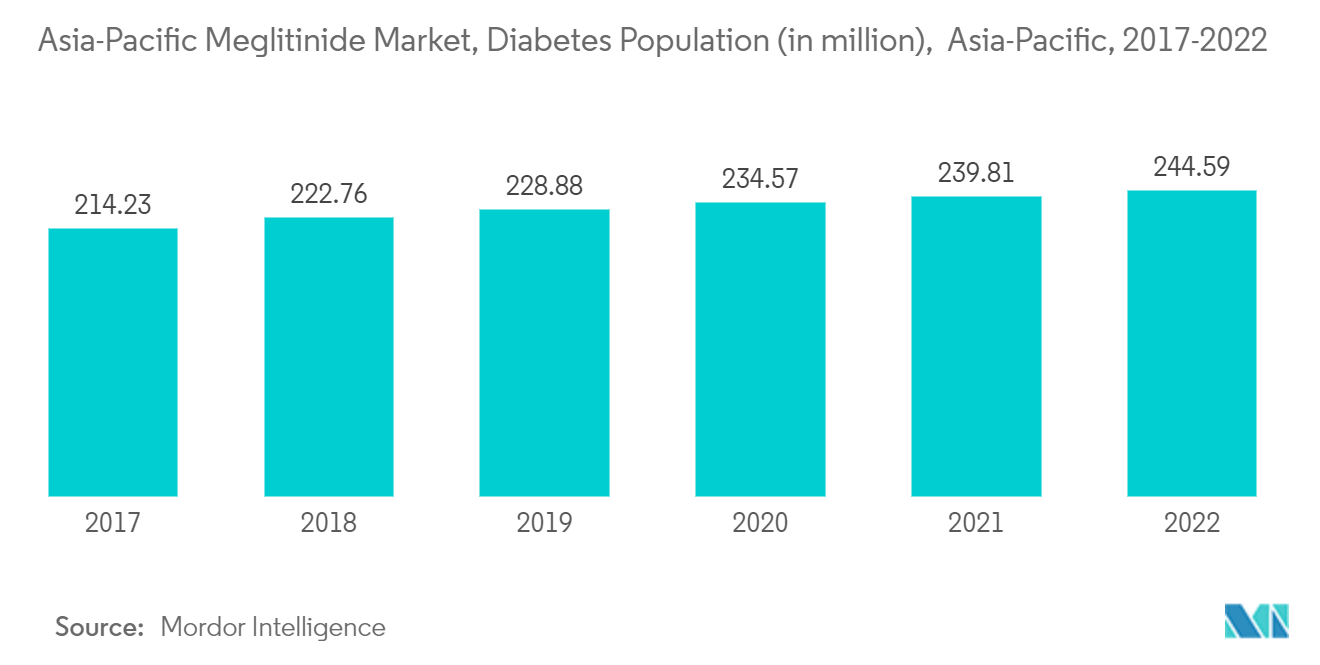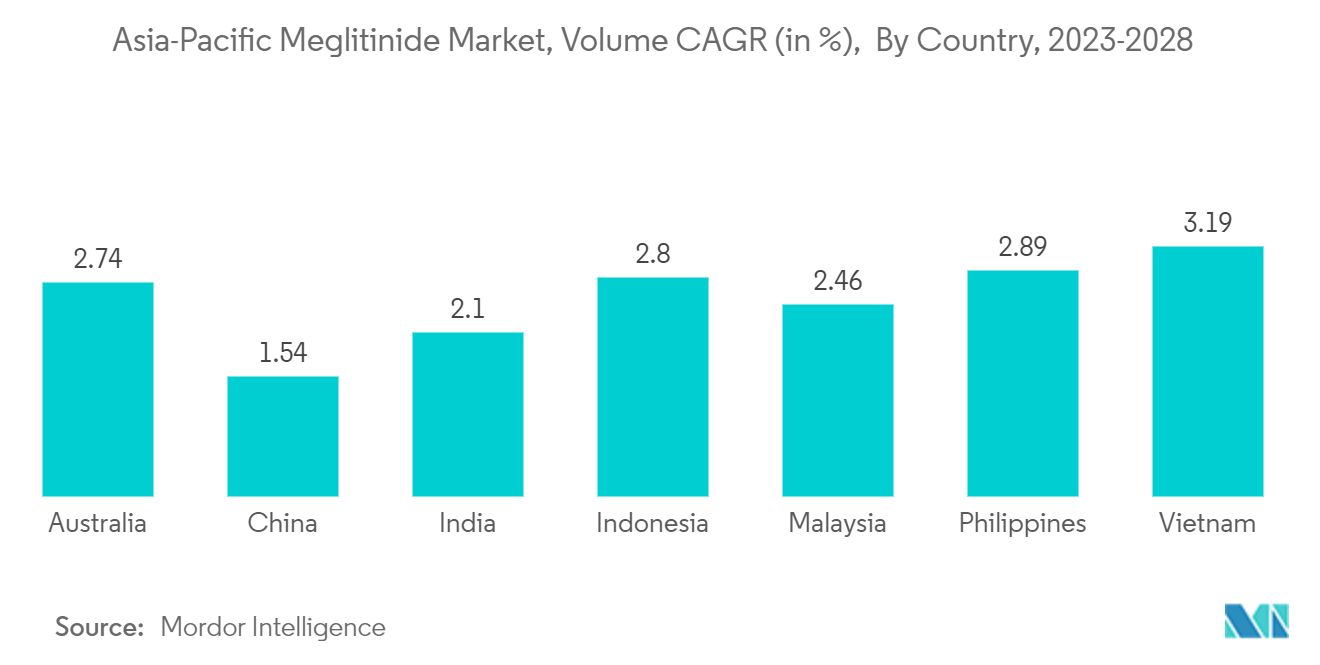Market Trends of APAC Meglitinide Industry
Rising Diabetes Prevalence in Asia-Pacific Region
The Asia-Pacific region witnessed an alarming increase in the prevalence of diabetes in recent years. In developing countries such as China and India, the rate of diabetes is at an all-time high. Patients with diabetes require many daily corrections to maintain normal blood glucose levels, such as oral anti-diabetic medication or ingesting additional carbohydrates, by monitoring their blood glucose levels. Leading manufacturers are focusing on technological innovations and developing advanced products to gain a substantial market share.
Oral anti-diabetic medications are accessible globally and are indicated for usage when treatment escalation for type 2 diabetes is necessary, in addition to lifestyle control. Because of their wide variety of effectiveness, safety, and modes of action, oral medicines are often the first drugs utilized to treat type 2 diabetes. Diabetes medications assist diabetic people in maintaining control of their condition and lowering the risk of diabetes complications. Diabetes patients may need to take diabetes medications for the rest of their life to maintain their blood glucose levels and avoid hypoglycemia and hyperglycemia. Meglitinides are non-sulfonylurea insulin secretagogues with a fast onset and brief duration of action. They promote glucose-sensitive first-phase insulin release, lowering the risk of hypoglycemia. Meglitinides cause the body to release more insulin in people with type 2 diabetes and chronically high blood sugar levels.
The World Health Assembly Resolution 2022 advocated for the integration of diabetes prevention and treatment into primary health care, the creation of pathways for a significant increase in insulin access, the promotion of regulatory convergence and harmonization for diabetes medicines and technologies, and improved diabetes monitoring and surveillance. Furthermore, it entails the WHO advising Member States on ensuring the continuous care of people with diabetes in humanitarian catastrophes. This significant achievement establishes a global mandate for diabetes work for the next decade.
As a result of the reasons above, the studied market is expected to increase throughout the analysis period.

China is Expected to Dominate the Asia-Pacific Meglitinides Market.
According to estimates, one in ten Chinese national residents includes diabetes. Each year, millions of new cases of diabetes are diagnosed in the twenty-first century. However, because many instances are thought to go undiagnosed, it is challenging to determine the exact number of diabetes in China. China is thought to surpass India as the nation with the highest prevalence of diabetes worldwide. China's cities, where traditional eating habits are swiftly vanishing, and economic growth is rising, are where diabetes is most common. The main contributors to this rise in diabetes cases, according to Chinese health experts, are urbanization, higher living standards, and an ageing population. By paying outpatients for more than half of their prescription expenditures, China took measures to cut the costs of treating diabetic and high blood pressure patients, according to the National Health Commission (NHC). More hospitals in China will create National Metabolic Management Centres (MMC) as part of their investigation into a new model of diabetes care, according to a national metabolic disease clinical research centre. Over the past two years, MMCs all around the nation treated more than 200,000 patients, according to data from the National Health Commission, China.
Meglitinides, for example, bind to the sulfonylurea receptor in beta cells (pancreatic insulin-producing cells) but at a different site than sulfonylureas. Meglitinides' interaction with the receptor is less " tight " than sulfonylureas. It results in a much shorter duration of action and a higher blood glucose level required before the drugs produce pancreatic insulin secretion. Currently, two meglitinides are available in the United States: repaglinide (Prandin) and nateglinide (Starlix). Both are approved for use in Type 2 diabetes patients alone and combination with other oral diabetes medications. The main effect of meglitinides is to lower after-meal blood glucose levels, which results in a lower HbA1c (an indicator of blood glucose control over the previous 2-3 months).
Owing to the factors above, the market is expected to grow during the forecast period.


